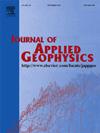Fusion and integrated interpretation of multisource geoscience datasets for mineral exploration
Abstract
Integrated interpretation has been a cutting-edge approach in three-dimensional (3D) mineral potential mapping (MPM) in recent decades. This research presented a multisource geo-data fusion and integrated interpretation approach for 3D MPM. Thereinto, the favorable geological bodies and faults were scored according to their closeness of the relationship with mineralization. The soil geochemical data and Landsat 8 OLI imagery was processed by orthogonal factor analysis (FA) to explore the mineralization-related geochemical factors and to extract hydrothermal alterations, respectively. The aeromagnetic data was denoised by multifractal singular value decomposition (MSVD) and was extracted of the residual anomalies by bi-dimensional empirical mode decomposition (BEMD). In this way, these multisource geo-anomalies were fused by TOPSIS algorithm and the fusion result was segmented by concentration-area (C-A) multifractal model for targets mapping. Then a wavenumber-domain fast 3D-inversion approach of MagFInv3D was applied in inverting the residual magnetic anomalies. At last, the targets, occurrences and regional faults along the inverted underground residual anomalies were integrated together for interpretation. It proved that the proposed approach could show high performance in 3D MPM, which could provide a reference for 3D mineral exploration, especially in a tectonically-controlled and polymetallic metallogenic belt.

 求助内容:
求助内容: 应助结果提醒方式:
应助结果提醒方式:


